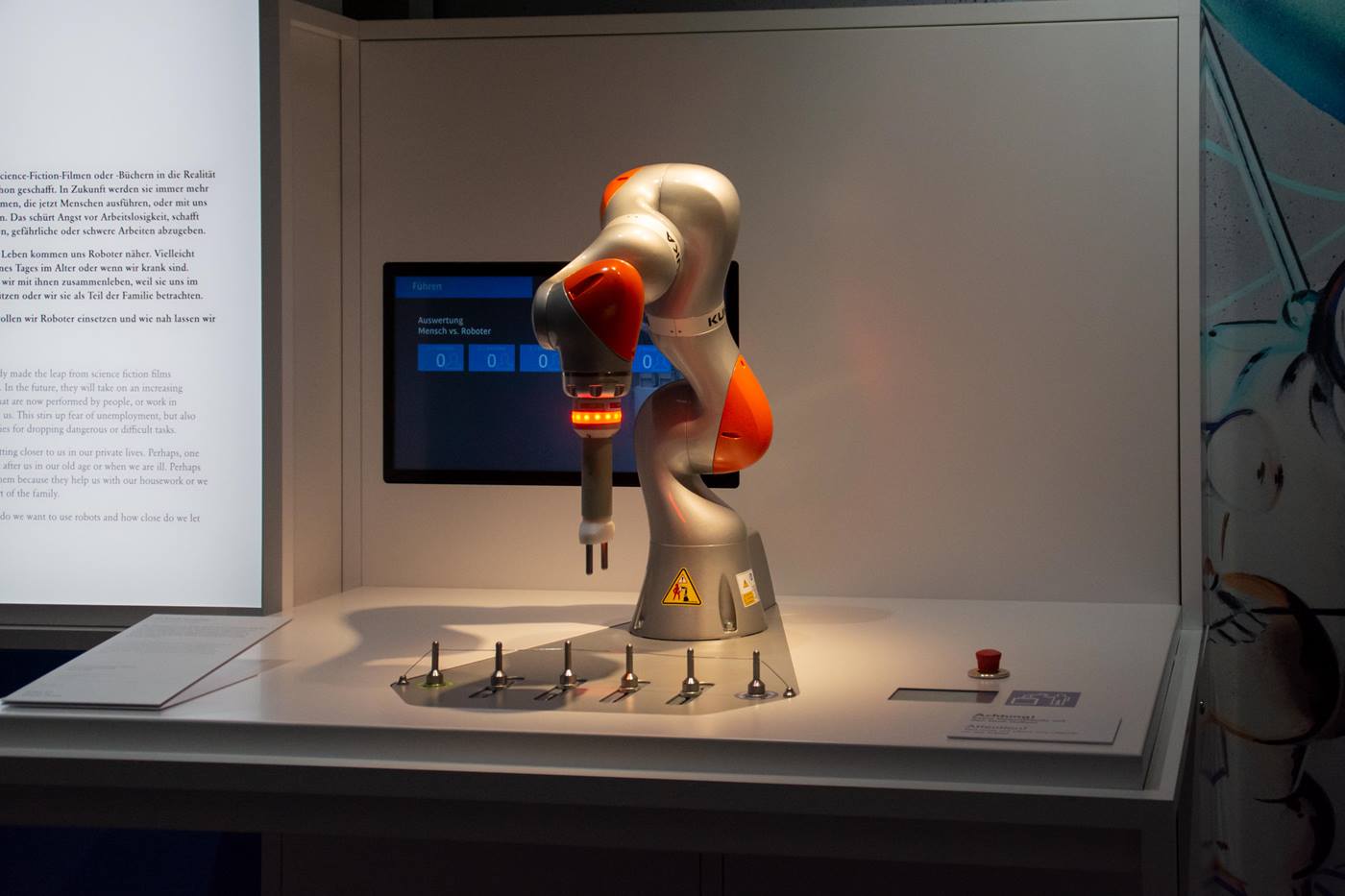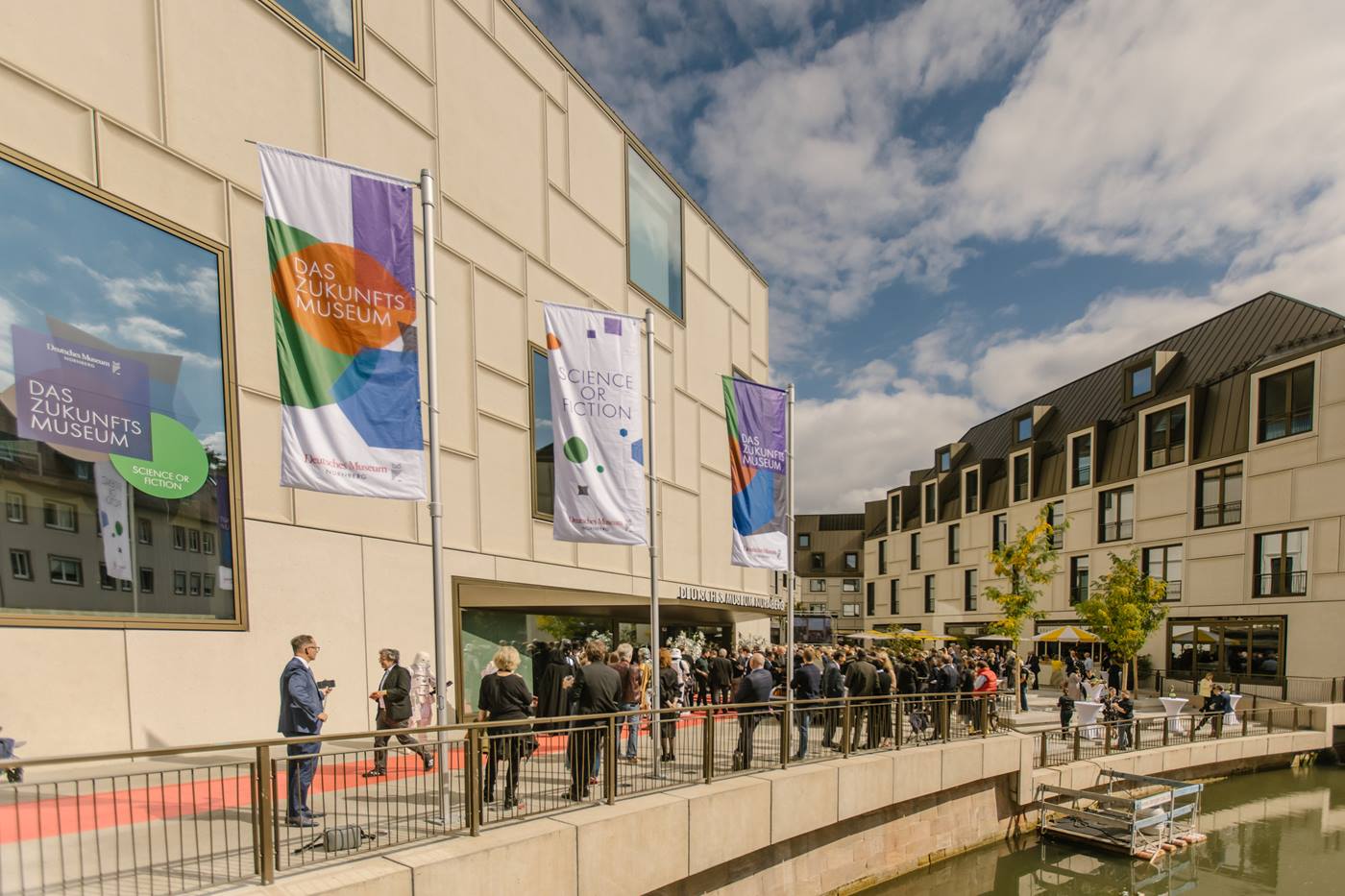KUKA robots in the Deutsches Museum in Nuremberg
The topic “Work and Everyday Life” is dedicated to robotics, artificial intelligence, social media and the Internet of Things
On the first floor of the Future Museum, a KUKA LBR iiwa is the focus of an exhibit that deals with the topic of “machine learning”, a sub-area of artificial intelligence. Machine learning is an approach in which algorithms try to independently learn relationships and rules or patterns from data. The more comparable information is available, the better the results will be. In addition to these backgrounds, visitors should primarily deal with two questions: What will the machine be allowed to decide for itself in the future? And: In which areas of life do we want to use robots and artificial intelligence – and in which not?
Man versus machine: hot wire competition
What is special about the robot exhibit: The lightweight robot is sensitive. Visitors can touch it directly, guide it with their hands and work together with the robot, so to speak. But it is also possible to compete against the AI robot. The task: Who will manage to guide the robot along the hot wire with fewer touches – the human being or the artificial intelligence running in the background of the machine?

KUKA robots in architecture
An exhibit from the University of Stuttgart shows how KUKA robots are used in architecture. The bionic “canopy” is an impressive example of the growing influence of robotics in architecture. Its individual modules were defined by an algorithm, produced with the help of a KUKA robot, and implemented by a team from the University of Stuttgart . After its premiere at the Victoria & Albert Museum in London , the pavilion could already be seen in other public spaces and is now part of the Future Museum . There are more impressions from the Deutsches Museum Nürnberg in the recorded livestream of the opening ceremony .
The motto of the permanent exhibition: Science or Fiction
The exhibitions of the Future Museum cover an area of 2900 square meters and five thematic areas: They begin in the personal living environment of the individual with “work and everyday life” and “Body and mind”, then broaden the perspective on the “system city” and the “system earth” and finally end with mankind’s dream of traveling through “space and time”. In addition to objects from science and research, there are also science fiction elements that reflect the whole range of possible expectations – from fears of the future to dreams of the future. The motto of the permanent exhibition is “Science or Fiction”.

This content was originally published on the KUKA website.

